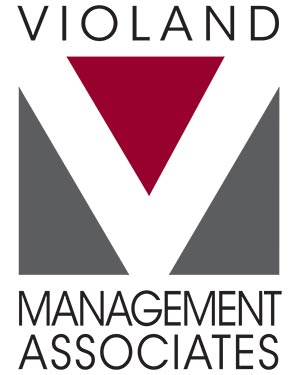Where is the restoration industry excelling? Where can it improve, and how? To pay homage to an eventful 2021 and help restorers ring in a prosperous 2022, R&R decided to go beyond the standard year-in-review piece. With those overarching questions in mind, we asked 13 industry thought leaders for their take on:
- Strengths: What is the restoration industry doing well?
- Weaknesses: Where does the restoration industry need to improve?
- Opportunities: What are your goals for the restoration industry?
- Threats: What obstacles does the restoration industry face?
From their responses, we curated this comprehensive collection of restoration industry SWOT analyses for your exploration. It is our hope that these perspectives – from association leaders, franchise and independent owners, business consultants, risk and liability experts, educators, and regular columnists – generate ideas that help fuel industrywide growth, in 2022 and beyond.
Annissa Coy
Owner, Firehouse Education and Mobile Clean Systems
- Strengths: As a whole, the industry is focusing on education, which is the most important thing in my opinion that will help us stay at the top of our game. In the past, this hasn’t been the case, but with all the changes in our world recently, I think we have realized that education and training have taken a back burner to profits and getting the work, when in reality education and training is why we get the work and have such great profit margins.
- Weaknesses: Too many times, I hear restoration professionals bad-mouthing the insurance industry as a whole and vilifying them as the bad guy that is out to get us. This couldn’t be further from the truth in my opinion. At the end of the day, insurance companies are a business just like us that is trying to make a profit. Are there some bad or even rotten apples out there? Sure, just like there are in the restoration industry. But as a whole, they are not different from us as businesses wanting to make as much profit as we can. Our job is to figure out how to work with them, as they are ultimately the ones paying us, while maintaining profits and getting the job done the way it should be.
- Opportunities: My goal is, and always has been, to bring an awareness to contents processing and how important it is to be well systemized, technically trained and ready to provide help in our communities when dealing with a fire loss. I believe more and more companies are getting on board with this, and creating something amazing for client experience that will be at the forefront of our industry in the upcoming year.
- Threats: Being commoditized is one of the biggest obstacles I feel our industry faces. It’s why I love contents so much, because insurance companies have figured out how to box in and control water and reconstruction, but contents – well that’s a very different animal. How do you commoditize someone’s feelings, emotions and memories? You can’t, and that’s why contents scare insurance companies. It’s also why processing contents in our restoration company can help us stay out of the commodity trap.
David Dybdahl
President, ARMR.Network
- Strengths: Responding to natural disasters on a mega scale. The capability to proactively mobilize resources from all over the U.S. to areas in need is amazing. The ability to deliver reliable and predictable outcomes for the customers of insurance companies that have claims on a nationwide basis is impressive. Voluntarily embracing training and standards of performance reflects well on the increasing professionalism in the restoration business.
- Weaknesses: The “restoration business” needs a voice in the insurance claims ecosystem (See below for what that is). Without a unified voice, the profitability of the restorers becomes inadvertently challenged. The economics of insurance works against the individual restoration firm, and even franchise organizations, by default. Insurance companies and policyholders benefit from the work restorers do. Both of these stakeholders in the insurance ecosystem want and need high-quality restoration services, and both are willing to pay for good quality work through insurance proceeds. But without a unified voice on what it costs to perform good, quality restoration, restorers are getting squeezed on profit margins at every turn, but not on purpose.
- Opportunities: I would like to see fewer restorers buying junk insurance policies sold by usually well-intentioned but uniformed insurance agents trying to make their sales goals. In one real-world example, 94% of insurance certificates I reviewed showed insurance that met an insurance specification in the contract that was, in fact, not present in the policies the insurance agent sold to the restorer. The same insurance agent that sold the policy issued the certificate of insurance. Depending on the perspective of the beholder, issuing bogus insurance certificates verges on fraud, or if the glass is half-full, it is just selling junk insurance. From either perspective, the contractor is holding the short end of the stick. The indemnity agreement the contractor signed has no connection to the collectability of insurance. The contractor must pay claims out of pocket if they are not covered by insurance. Insurance that does not meet insurance specification is junk in my book.
- Threats: The profitability of restoration firms is being challenged by the insurance mechanism. In the insurance ecosystem of insurance buyers, policyholders and restorers, the system automatically rewards insurance companies who can cut down on claims costs. Since claims costs equal restoration costs in property insurance policies, the profit incentive for insurance companies to lower costs naturally squeezes the profit margins of restorers. The good news in the ecosystem is insurance companies benefit from happy customers who renew their policies with the company after a loss. Insurance carriers want happy customers after a loss. Therefore, insurance companies, in the long run, benefit from restorers making a reasonable profit to do a good job for a policyholder. Today there is no reliable feedback loop in the restoration business on what restorers need to be paid in order to make a reasonable profit margin.
Doug Hoffman
CEO, NORMI
- Strengths: There is a great interest in training and an increased desire in wanting to know how to better serve clients with improved products and enhanced services. Conferences like The Experience are growing as more and more professionals seek expert help in expanding their offerings.
- Weaknesses: Entry-level employees are not receiving the practical training and support they need. Our organization has focused on a FIRM membership program to offer online employee training programs to employees to help reduce liability for the employer. These types of programs are proving helpful in better educating lower-level employees on the need for a higher level of competence in the field in which they work.
- Opportunities: COVID-19 brought sanitization concepts to the forefront, and professionals should establish goals to get properly educated on the need for safer, cleaner and healthier indoor environments. We are the front-line professionals who know more about indoor air quality (IAQ) than anyone else knows, and should understand the need for comprehensive IAQ solutions.
- Threats: Supply chain issues will continue to plague the industry throughout 2022, so the need for better long-range planning is imperative. Keeping enough stock in place to satisfy the needs of the client and the safety of the employees will, if not addressed, pose a significant obstacle to an otherwise successful year.
Lisa Lavender
Owner and CEO, Restoration Technical Institute and Berks Fire Water Restorations; VP of Operations Design, iRestore
- Strengths: The industry is adaptable and resilient, which is somewhat attributable to the nature of the business. Upon reflection of over 20 years in the industry, there have been great strides in the availability of resources and comradery. Starting out as an independent restoration company, we were “on our own.” Today, new and long-time restorers have come together as an industry. Organizations, information and restoration friends are readily available to help each other succeed, share advice and sometimes just be a friend when you need one. This unity is a strength and the industry has done well at fostering this.
- Weaknesses: As an industry, our weaknesses, opportunities and threats are intertwined. Starting with our weaknesses, although we have made great strides at communicating and educating within the industry, our weaknesses are found in our effectiveness of communicating outside of ourselves. Most of the general public does not recognize or have an awareness of the industry, the necessary skills, complexities nor the credentials that are involved. I recall a long-time friend who knew that I was a restorer enthusiastically say, “Lisa, I heard you are a master plumber!” I laughed and said, “You do not want me to install plumbing. I am a master water restorer.”
- Opportunities: One of my longstanding personal goals is to encourage and give tools to other restoration professionals in the pursuit of educating customers and communities. I want the industry and all that it encompasses – from the skills to the complexities – to be known, recognized and respected by those outside the industry. I believe that this is an opportunity for us to present messaging and education while creating recognition for the industry. When was the last time that we filled out a form or survey and restoration was listed as an industry? Construction, building services, janitorial. Where is restoration? This goal/opportunity is potentially the solution to the threats.
- Threats: The human resource challenges and the commoditization of our industry is a threat that can be overcome by recognizing the weakness and seizing the opportunity. Unless you are a second- or third-generation restorer, who grows up wanting to be a restorer? They don’t know it exists as a profession with opportunity and reward. It is not recognized as a career path. It is more something that people “fall into.” The public does not know of the science, skills, credentialing, etc. of a restorer. The lack of understanding and recognition of those outside the industry will remain a threat if the lack of awareness exists. Over the years, when I have had the opportunity to present education to those outside the industry a common response is “I had no idea… I thought you just throw equipment in a room.” As long as this is the perception of those who even know what the restoration industry is, we are threatened to be commoditized and will continue to struggle to attract talent to an industry with a lack of identity in the world at large.
Gokul Padmanabhan
Owner, Restoration Brokers of America
- Strengths: The industry itself, from a financial perspective, is healthy. The market continues to grow and there are healthy businesses in our industry as well as growing business and new blood moving our industry forward. The new entrepreneurs that are coming into the industry will most likely take it in directions we haven’t imagined today, which bodes well for the industry as a whole.
- Weaknesses: All of the contractors need a collective voice to advocate on their behalf; organizations like the Restoration Industry Association (RIA), with its new focus and mission statement it is beginning to address. As the industry begins to consolidate there will be investment missteps.
- Opportunities: We see opportunity in mergers and acquisitions in selected regional and national players, which will be good for the industry in bringing technology and standardization, as well as better customer service.
- Threats: There may be several kinds of risks that are inherent in the insurance claims business. The tolerance of these risks by business operators may result in narrow margins going forward.
Phillip Rosebrook
President and Managing Partner, Business Mentors
- Strengths: Restoration has proven to be an essential industry that provides a service with a high purpose. We restore lives and livelihoods of those impacted by disasters. As the world shut down in 2020, restoration continued strong. I have seen an across-the-board increase in professionalism both from independent companies and through the franchise operators. Finally, I am encouraged by the progress from the Advocacy and Government Affairs (AGA) group from the Restoration Industry Association (RIA). The AGA is helping with pricing, scoping, representation, and areas where contractors need to have a collective and unified voice.
- Weaknesses: One of the biggest challenges in the industry comes from the fragmentation of the players. The industry is populated by small to mid-size companies. This puts the average restoration company in a position of weaknesses in dealing with the multinational insurance and management companies. Another challenge is that there are many different software solutions in the industry, each solving a new and important issue. The challenge is that they frequently don’t work together, which requires many different data entry points for the same information. This adds to the additional required administrative functions, which are often not reimbursed or directly paid for by vendor programs and TPAs.
- Opportunities: Restoration is uniquely situated to serve the changing environment, cultural and demographic trends. Restoration is a recession-resistant industry and companies with a strong business approach can take advantage of these opportunities to create a strong local and regional presence. Opportunities can also be created in niches of the industry such as mold, contents and other supporting restoration services. Companies that embrace technology can drive efficiencies. The recent trend of consolidation offers owners that are looking for an effective exit strategy many options.
- Threats: There will be continued labor challenges, especially for frontline staff and in the construction trades. Many of the skilled construction staff are nearing retirement age or may be looking to move out of the field and into management positions. Compensation for people that will fill entry restoration technician positions and build a restoration career are finding many other options for employment as well. Another major threat to restoration business owners is a lack of focus and discipline on profitability. Many companies are operating on thin margins and are generally cash poor. Continued downward pressure on profit margins can be detrimental to these companies. I also think there are many companies that are accustomed to continued weather events. Companies need to keep in mind that there was a 10-year period without any hurricanes hitting the U.S. starting about 2007 and the wildfires are a relatively new phenomenon. Companies that are using weather events to overcome poor business practices may have challenges in years or even spans of years without the events. Using the unpredictability of weather as a business strategy is risky.
Sean Scott
Author, “Secrets of the Insurance Game” and “Red Guide to Recovery”
- Strengths: Advances in science and technology are helping today’s restorers to be far more educated in their craft than in years past. This raises the level of professionalism that helps ensure that consumers and property owners get the highest level of work product and a successful restoration project. Organizations like the IICRC are creating new standards and new ways of learning that are making our industry far more informed than ever before.
- Weaknesses: 1) I think the industry needs to adopt some form of code of ethics to help keep restorers more accountable. 2) There should be more hands-on training in certain principals such as fire restoration that gives restorers a deeper understanding of the complex issues every fire presents. 3) There need to be more local associations where restorers can collaborate, get to know one another and help improve the industry. The concept of “iron sharpens iron” applies here.
- Opportunities: My goal is to share my 40-plus years of experience to help restorers in every aspect of this industry become better at what they do and leave behind a legacy for future restorers to follow. My hope is that the industry at large will recognize that the information, articles and tips I share can help restorers avoid many of the costly mistakes I have made along my journey as well as highlight the many successes that others can benefit from. In addition, I would like to see underserved communities such as African Americans, Native Americans and those with disabilities get a boost so they can enjoy the successes this industry has to offer and have the opportunities to open their own restoration firms to better their lives and communities.
- Threats: The restoration industry has a symbiotic relationship with insurance companies. In some respects it is somewhat of a love-hate relationship as insurance companies want to control or minimize costs and restorers want to make as much as possible. The greatest threat or obstacle I see to the restoration industry is the emergence of more and more managed repair programs like Contractor Connection. These programs are exerting far too much control over restorer’s businesses and squeezing their profit margins razor thin in many cases. I have seen all too many restoration companies go bankrupt because of putting all their eggs in the program basket and if the industry doesn’t diversify and/or push back on these programs, a lot more financial hardship is destined to come.
Idan Shpizear
Founder and CEO, 911 Restoration
- Strengths: We’ve known for a long time that the restoration industry is only going to get busier and offer more security for business owners as time goes on. We’re seeing evidence of that right now. Every year, we have more storms, more hurricanes and more fires. It’s unfortunate, but it’s the reality, and this keeps restoration companies very, very busy. In addition to being in constant demand, restoration is not vulnerable to the economic climate the way other industries are. If a house is flooded, it has to be cleaned. Mold has to be remediated. Fire damage has to be repaired. Between the rise of climate change and the recession-proof nature of the business, restoration professionals can rest assured that the work — meaningful, fulfilling work —is always there. We don’t have to create opportunity; we just have to seize it.
- Weaknesses: As a whole, the restoration industry is not taking advantage of technology. We actually live in a world where cars can drive themselves, but we still have to send a technician out every day to check for moisture. The processes we use to serve our customers and run our offices make no sense. There are so many pieces and a lot of redundancy. Because of this, business owners are easily overwhelmed and constantly stressed. Many of these problems could be fixed by integrating the technology available to us.
- Opportunities: Technology is our greatest opportunity, and now with younger people entering the workforce, this is the perfect time to tap into this resource. If we can bring in more professionals who truly understand both technology and the customer experience, we can design new systems to push our industry forward. This means we can make the process easier for our clients, who are in a state of crisis, and need as much simplicity and clarity as we can offer. Tech also allows us to operate more efficiently behind the scenes while improving billing, which allows us to do more with higher profit margins. As a franchise, we’ve been working on integrating technology for a while, and since we made this a priority, our system has become much easier, more efficient and better for the people we serve.
- Threats: First, the biggest threat I see is industry-wide reluctance to move forward with technology. Customer expectations evolve with tech, and any time a restoration company refuses to keep up, they’ll find themselves in hopeless competition with someone who will adapt. Another threat comes with the challenge of attracting those younger professionals who have those innovative skill sets. These people are more likely than previous generations to have college degrees and big dreams of online fame or entrepreneurial success. They’re not really thinking about a field like home services, and that’s a loss for both us and them. This is an industry where a driven professional can make great income, have a really positive impact on others’ lives and influence the entire field through innovation. It’s hard for young people to see that potential in an industry where we’re still stuck on “the way it’s always been done.” On the flip side, if the industry as a whole can start demonstrating a commitment to innovation, we have a chance to bring on those tech-forward minds and truly capitalize on our strengths as a recession-proof business that offers high practical and emotional value to our communities.
Katie Smith
Owner and CEO, PHC Restoration; President-Elect, RIA Board of Directors; Recipient, R&R 2021 Women in Restoration Award
- Strengths: The Restoration Industry Association (RIA) has made great strides to get organized and reach more restorers with the message of uniting to advocate for the best interests of restoration contractors. The Advocacy and Government Affairs (AGA) team has identified the major issues that are challenging restorers and created position statements to articulate a shared stance on those issues. We are having meaningful conversations with industry stakeholders and speaking with one voice to drive changes within the restoration ecosystem.
- Weaknesses: I believe some of our hiring struggles come from the need to establish our craft as a major construction trade and articulate the potential for a career in our industry. One way we can do that is by laying out a clear career path that shows how someone can grow in our industry, similar to apprenticeship programs in some trades. This can also help us support higher labor rates that more accurately represent the skills and certifications that our technicians use to solve our customers’ problems. The good news is that our weakness is also an opportunity. A career path, along with a clearly communicated purpose and greater meaning behind our work, will help us attract candidates to our awesome industry and keep them here because they have abundant opportunities to develop themselves as professionals.
- Opportunities: Now is the time to improve how we monitor legislative issues and devise strategies to take swift action to ensure the restorer’s interest is represented at the state and national level. We have opportunities to join forces with like-minded organizations and build coalitions to maximize our advocacy efforts. I also anticipate there will be a push for restorers to have regular representation with carriers, third parties and pricing platforms in 2022.
- Threats: If history has taught us anything, it’s that we have to avoid shiny objects and stay focused on our main priority, which in the RIA’s case, is advocacy. In a world where there are endless things vying for our attention, we have to work twice as hard to communicate with restorers to let them know when new advocacy resources are released, and how they can access those resources. Fortunately, this is a relatively easy fix. Restorers can make sure they’re receiving RIA e-newsletters, follow us on social media and attend RIA events to receive the latest training in how to use our advocacy resources.
Mark Springer
President and CEO, Dayspring Restoration; Northwest Region VP, FLEET Response; President, RIA Board of Directors
- Strengths: The industry is beginning to unify and collaborate in many ways that can improve its sustainability. Several examples that I can speak to personally include the growth of the enterprise members within the Restoration Industry Association (RIA). High-level executives are participating in industry initiatives in ways that I have not seen in many years. Also, the partnership of IICRC and RIA is yielding fruit in standards development, industry guidance, advocacy and career path development.
- Weaknesses: I continue to believe that managed repair programs provide a disadvantage and long-term challenge to restoration companies. The guidelines for these programs often are not based on market conditions, but rather insurance carrier edicts. They result in precedents that have sweeping implications for companies that choose not to acquire leads in this fashion. Because many restoration companies have come to rely on the business that is generated by these programs, they sometimes have little choice in the important decisions that face their organizations.
- Opportunities: My goal is always the same: Do what I can to work with others to leave this industry better than we found it.
- Threats: The RIA is working to build out the seventh and final step of the Advocacy and Government Affairs (AGA) blueprint. This pertains specifically to legislative and government lobbying. I believe that, in the near future, there will be legislation, likely at the state level, that will threaten the rights of restoration contractors. These will likely be positioned as “consumer protection laws,” but I suspect that the consumer will not be protected, at all, by these laws. The restoration industry is long overdue in having a voice in the venues and halls of our state and federal government. I hope to see the industry unite around us in this challenge.
Andrea Stenberg
Emergency Services Production Cleaning Manager, Paul Davis Restoration of Portland/Vancouver; Recipient, R&R 2021 Ladder Award
- Strengths: Customer service. The insurance companies are becoming less and less personal with their customers. Restoration companies are that personal presence that gives the customer peace of mind and high-level care for their home and for the loss they have experienced. Restoration will always be needed. Disaster strikes without permission and in many ways. The industry continues to grow and the need for specialized contractors will never go away.
- Weaknesses: Communication. Customer service is a strong attribute that restoration contractors provide with their everyday service, but like most industries, communication is still a pain point. Communication with our teammates, communication with the subcontractors and vendors, daily communication with our customers, and communication within our network of restoration support people to provide the best service for our customers in need. There are many tools, apps, communication programs, and great people in this industry that can provide improvement and fill gaps in how we communicate with each other and our customers. There is always lots of room to improve for us all.
- Opportunities: My number-one goal in the industry is to help it grow. I truly believe that we make a big difference in our communities to provide a service that isn’t easy, isn’t planned and is strongly needed. Weather, accidents, trauma and nature are not going away any time soon. I want to contribute to new systems, new processes, and utilize the latest and greatest equipment to make recovery for our customers faster, with the best results, and keep our strong field team workers and subcontractors safer and better supported.
- Threats: The growing and changing guidelines of the insurance companies seem to be one of the most difficult obstacles to navigate. Competitors that work directly within the new guidelines start to take work away from other restoration franchises and business owners that cannot be compliant with these guidelines. For those working with insurance, it is crucial to be knowledgeable and stay in touch with the different insurance carriers to understand their needs. I think now, more than ever, we are seeing how the world of insurance is becoming more and more digital and express. We need to stay vigilant to these changes and adopt new processes to accommodate their needs.
Carey Vermeulen
Chairman of the Board, IICRC
- Strengths: The industry continues to embrace certifications and standards for the advancement of the restoration profession.
- Weaknesses: Educating and developing the next generation of industry leaders remains a challenge, but not one that the industry cannot overcome. We still have too many contractors who are not certified and not following industry standards. Also, educating the insurance industry about our standards and certifications is essential.
- Opportunities: We will educate government officials and the public on the value of restoration certifications and industry standards, and continue to provide expert-developed standards and certifications for restoration professionals.
- Threats: We see the development of laws and regulations around restoration work as a lurking threat, but only if we do not get ahead of it now. The insurance industry developing their own standards and procedures to control the cost of restoration work is another potential threat.
Violand Management Associates
-
Strengths:
- Serving people who are experiencing one of the most traumatic experiences of their lives. Providing livelihoods, meaningful work and personal fulfillment for the owners of the companies who provide restoration services.
- Traditionally, many of the people who both own and who work in the restoration industry have been drawn to it because of a desire to service others, especially in a moment of need. Also, the continuous effort to better understand and use the science and technology behind the work we do.
- Restorers are some of the best problem solvers. Every project is unique in its own respect. Whether it is the needs of the customer, carrier or other stakeholders in a project, or the challenges of the damage itself, the work they do can be very complex in nature. Restorers do an outstanding job of meeting these demands, oftentimes with limited resources.
- Leaders in the industry have recognized the need for unity at the top. There are several initiatives from multiple groups to organize and find solutions to existential threats that independent restorers face. I am hopeful that the momentum to protect the industry will continue and grow.
- Community and adaptation. Restorers find community important, and work to build and maintain it. We share what is working for us and humble ourselves when talking with others in realizing we don’t have it all figured out. In general, restorers adapt quickly to change. It could be the 24/7, 365 nature of our business, but that ever-changing, external business environment also sets us up well to make change internally in the business.
-
Weaknesses:
- There is still much work to be done to learn to speak with one voice.
- One of the most glaring weaknesses in the industry is financial accommodations restorers make for their customers and the insurance carriers who provide funding for the projects. In an attempt to satisfy all parties, contractors continually put themselves in financial risk by funding the projects and waiting for payments much longer than they should. This is a unique scenario that does not exist in many other construction and service industries.
- Restorers fall victim to the trap of recency bias on a regular basis. When an owner or estimator has a discussion with a lackluster adjuster, I often see and hear that they use one interaction to paint a broad description of that type of person in our industry. It never ceases to amaze me that I leave one conversation where someone characterizes a provider poorly and in the very next conversation, the same provider is praised for how well they work with restorers.
- Focus on being better businesspeople and less on being the most technically savvy. The market is changing, and the profits are changing with it. The room for error is eroding.
- Being the best at drying, having the best equipment, implementing new technology isn’t enough anymore. We need to be better at the business of business in order to maintain and improve. The margins achievable in the restoration industry allowed a poor operator to maintain in the past. Now, as the restorer feels pressure from all sides (carriers, wage burdens, savvy customers to name a few), the margins dwindle down point by point, and the better business-minded operators will be most successful in the end.
-
Opportunities:
- To learn to speak as a unified voice. To advocate for ourselves.
- To present the industry as a legitimate career choice in both the trades and in management.
- A unified effort is necessary to recruit skilled labor into the industry. This should include promotion of the career and vocational training at high school and post-secondary education levels.
- Thinking long term, the industry should begin preparing for the future of all the mergers and acquisitions that are occurring right now. I believe the companies that have been purchased by individuals will fare well and continue to prosper. However, for the companies purchased by venture capital, I do not predict that they will do as well and will either dissolve or come up for sale in the future. Owners are aware of the risk, determination and leadership that it takes to keep a company moving forward. Once the industry is beyond the earnouts that the owners are honoring, we need to pay attention to how well those companies fare or risk losing the legacy of those operations. This could lead to a regional expansion for savvy owners or a new venture for acquiring entrepreneurs.
- Maintain some independence. There’s an affinity for the guy who was brave enough to start and keep up with something scary and crazy. While there’s respect for the big players and the role they play, some of the best thinking comes from the little guy (the dreamer). Resist the temptation of the quick and easy dollar. It may be altruistic, but it would be nice to be in a place where there is not someone waiting behind you to do the job at a dollar cheaper. As an industry, it would be nice if we could draw the proverbial line in the sand and see entrepreneurs maintain businesses that turn profits.
-
Threats:
- Government regulation of the industry.
- The long-term effect of all the M&A activity, and private equity money flowing into the industry. The long-term impact that money and power concentrated in fewer hands will have on the vitality of small businesses in the restoration industry.
- Some regulation might be a good thing. Especially if it involves timely payment of claims and release of funds by mortgage lien holders. In addition to impacts of consolidation, wage inflation and pricing competition are two real threats. Both of these things working together could set up serious repercussions for independent restorers who are not well positioned financially to compete in a marketplace with lower margins.
- Recently, the Environmental Protection Agency (EPA) has made the round in our industry looking for lead-safe practices. Most restorers are lax when it comes to documenting this and other risks. We should be leery of regulations and audits that could lead to restorers closing their businesses due to violations.
- Commoditization of our services; mergers and acquisitions (big business versus mom and pop). When looking at other relatable industries, there is a worry about the influence of private equity money in our industry. The focus may shift from being the best operator to strictly a return on the dollars invested. Money is invested into XYZ Restoration Inc. to return money, as opposed to taking care of our people, communities and keeping an eye toward innovation. Obviously, labor availability is a concern right now as well — across the entire spectrum of our businesses. From the tech in the field, to the admin staff, to the executive team. It is hard to hire and hire well. Our margins for error are getting smaller. As an industry, we need to be careful about whom we bring on board, how we bring them on board and how we keep them on board once they are here.
Click the photos below to view each industry leader's analysis

Annissa Coy

David Dybdahl

Doug Hoffman

Lisa Lavender

Gokul Padmanabhan

Phillip Rosebrook

Sean Scott

Idan Shpizear

Katie Smith

Mark Springer

Andrea Stenberg

Carey Vermeulen

Violand Management Associates
Do you have your own perspective to share?
Email [email protected].

